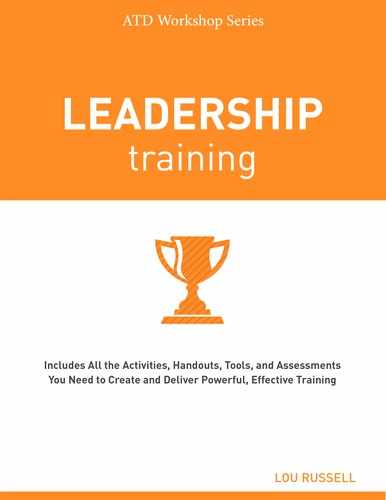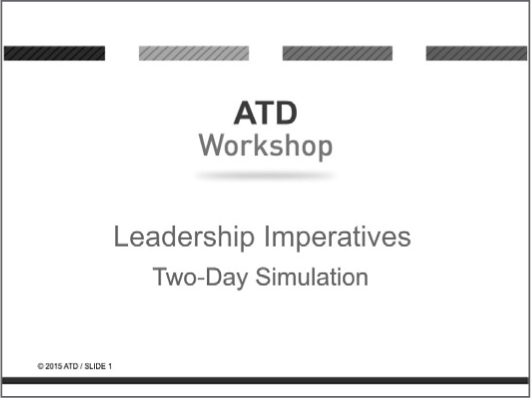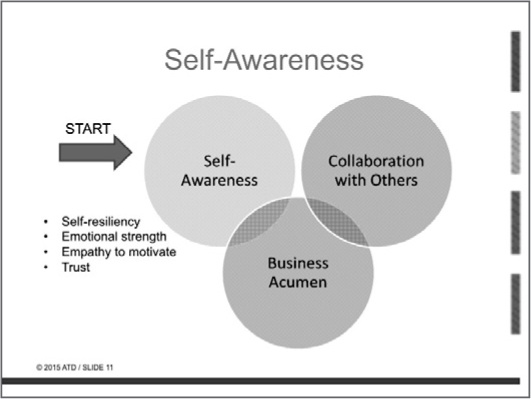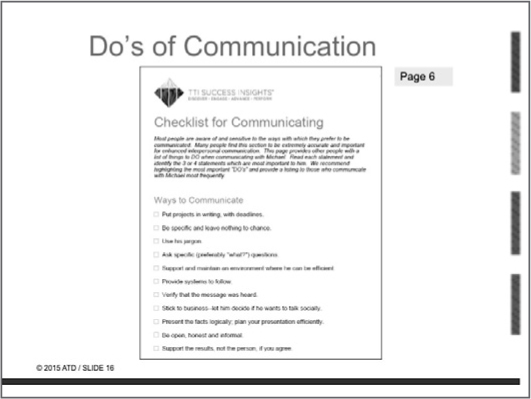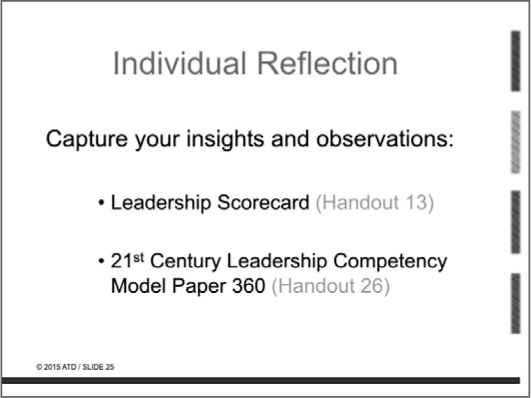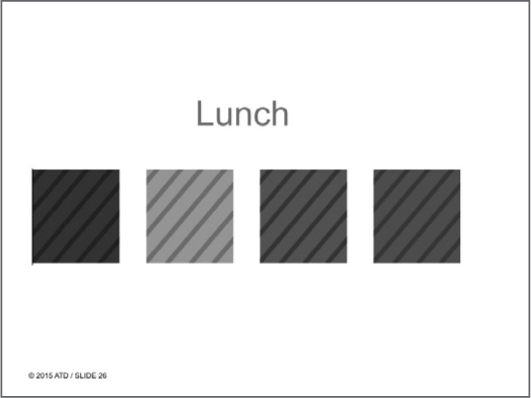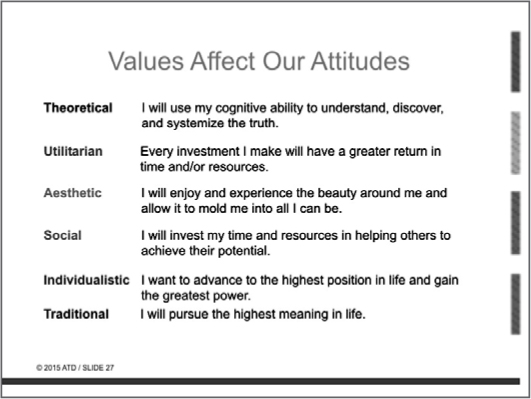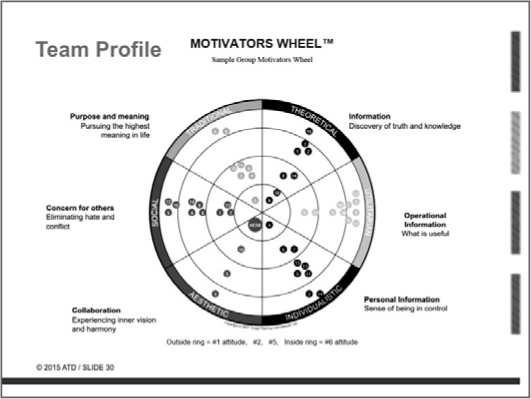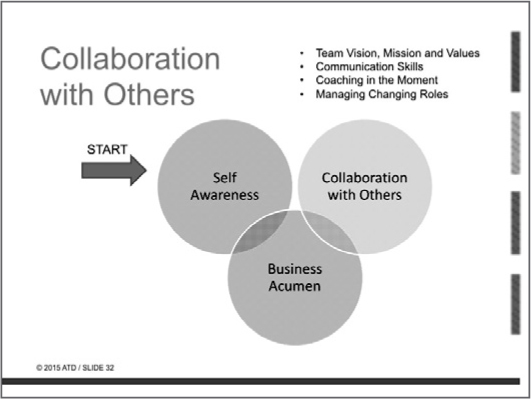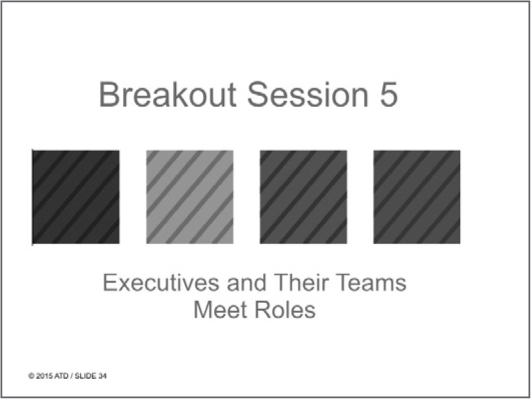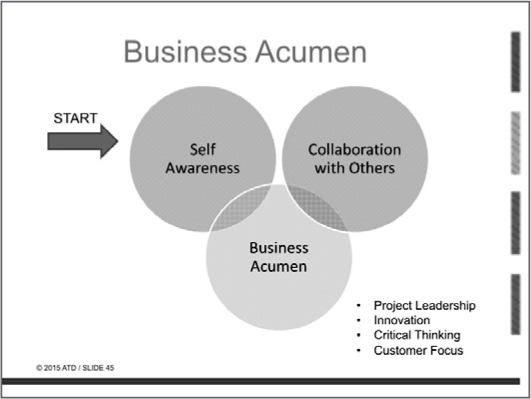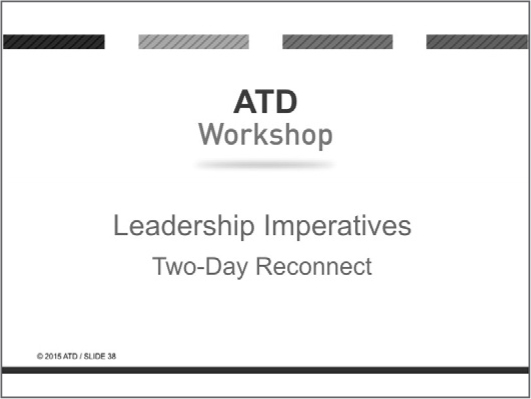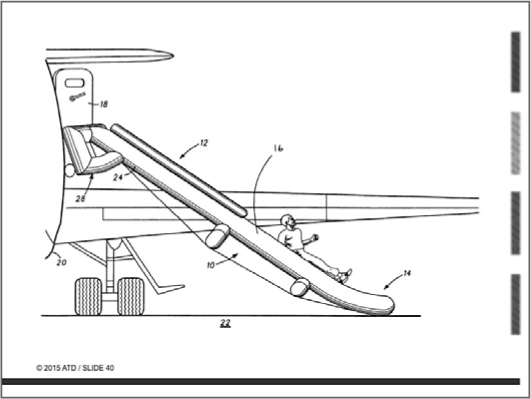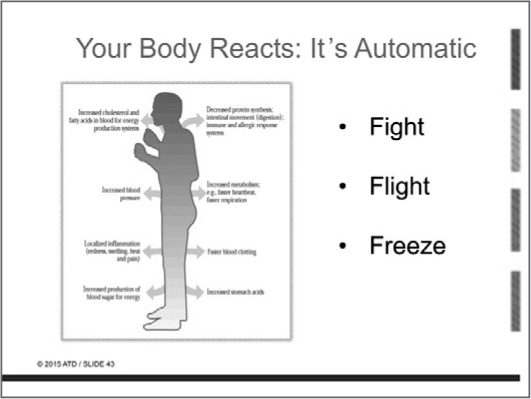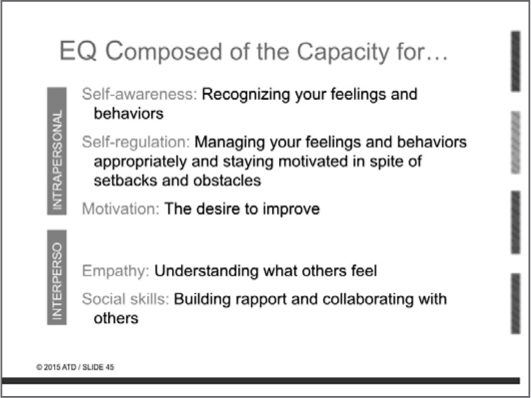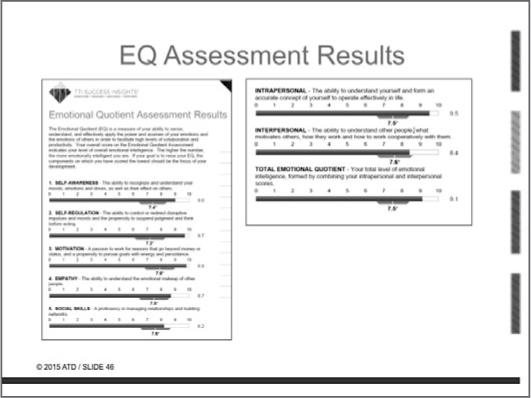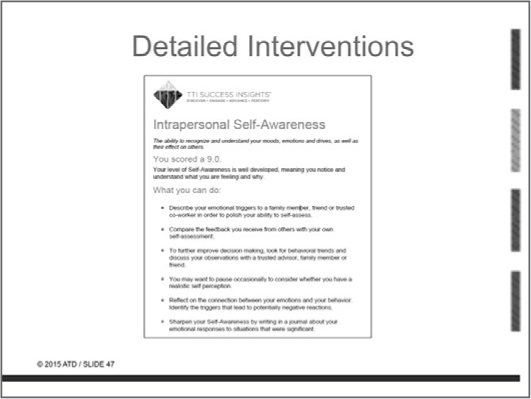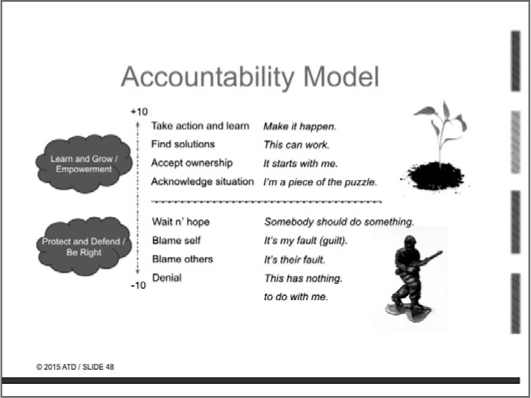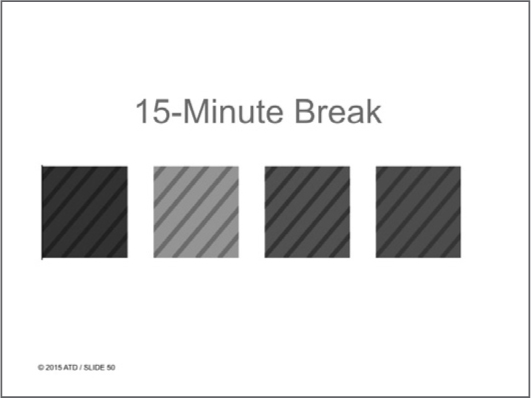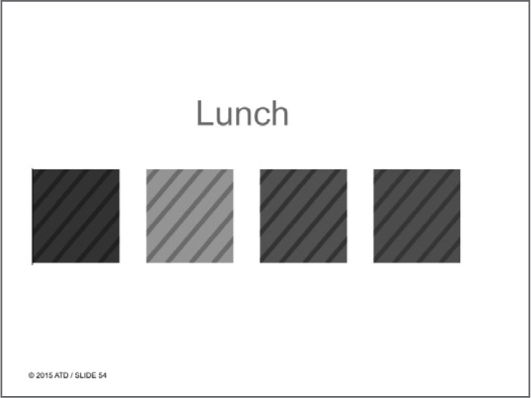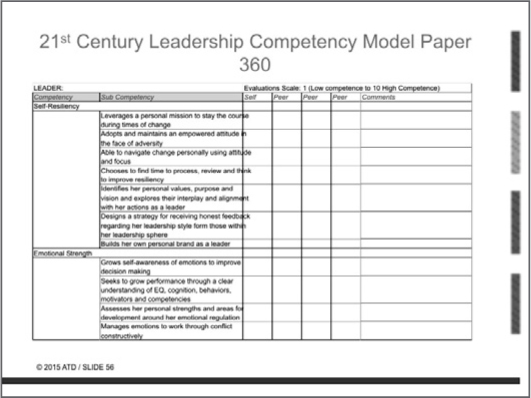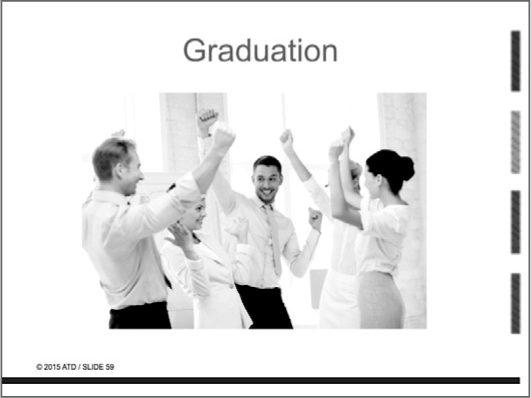Chapter 1
Two-Day Leadership Workshop
What’s in This Chapter
• Objectives of the two-day Leadership Workshop
• Summary chart for the flow of content and activities
• Preparing for the leadership workshop, including pre-work suggestions
• Two-day program agenda
![]()
Whether you choose a two-day, one-day, two-hour, or custom workshop, time spent on developing leadership skills will bring solid results in personal and organizational performance. There are, however, a number of benefits in conducting longer workshops. In two days, participants get to know each other, build rapport, delve deeper into a topic, and have the opportunity to practice the skills they are learning and to discuss and reflect on the application and relevance to workplace scenarios.
A well-designed workshop accounts for and anticipates the natural and predictable “low-energy” times during the day. It is essential to incorporate activities that engage participants, getting them out of their seats and actively participating in relevant and meaningful activities, small group discussion, and practice. When poorly designed, a two-day workshop can be tiring and cumbersome for both the facilitator and the participants, and the end result is often viewed as a waste of time.
Facilitating a two-day (or longer) workshop requires the facilitator to have high levels of energy and focus and a keen ability to read the energy level of the participants throughout the duration of the program. A great way to keep the participants engaged and the energy high is to manage the flow of activities, presentations, and small or large group discussions. Just like frequency of commercial breaks on televised programs, consider changing your training method every 10 to 15 minutes.
This chapter provides a comprehensive two-day workshop agenda using the principles of active training. It is designed to keep the content relevant, meaningful, and interactive.
Two-Day Workshop Objectives
By the end of the two-day workshop, participants will be able to
• Inspire and lead staff by demonstrating essential leadership skill development
• Reinforce communication required to maintain trust and awareness
• Model personal awareness, regulation, and development
• Leverage TriMetrix EQ (or other) assessment results to align and collaborate with team
• Respond to others’ needs collaboratively
• Use feedback to refine own leadership
• Lead self and others through change and uncertainty
• Apply leadership skills to everyday decisions, not just big, emotionally charged events
• Combine specific strategies with big-picture thinking to help a team reach a larger goal
• Use negotiation skills to break down the barriers of silo mentality
• Make quick adjustments to initial plans when unanticipated situations arise
• Apply knowledge from self-awareness to learn how to respond to challenges
• Collaborate with team members and others to get the best solution.
Before the Workshop: Pre-Work
Self-awareness is a key component of growing leadership competency. Online assessments are useful tools for this goal. We highly recommend the TTI Success Insights tools (three-part TriMetrix EQ) and the online 360 OD Survey, which enables learners to receive valuable feedback from their supervisors, peers, and direct reports. This 360-degree feedback when used with the TriMetrix EQ assessment creates consistent facts regarding the strengths and blind spots of the learner/leader. The results in total are used to create personal development plans. Chapter 13 will explain more about the assessments built into this workshop. Please read the introduction chapter and Chapter 13 carefully before planning this program. They give detailed information about using these profiles or substituting your own. They also cover what to do if you do not have access to formal, research-based assessment tools.
Two-Day Workshop Overview
Day-One Overview
| TOPICS | TIMING |
| Welcome and Introduction | 1 minute |
| Learning Activity 2: Inspirational Leader | 4 minutes |
| Leadership Competency Model, Leadership Scorecard, and 21st Century Leadership Competency Model Paper 360 | 30 minutes |
| Learning Activity 3: Personal Mission | 15 minutes |
| Expectations and Objectives | 10 minutes |
| Breakout Sessions 1 and 2/Learning Activity 20: Executives Meet, Teams Meet | 40 minutes |
| Self-Awareness Competencies | 5 minutes |
| Behavioral Strengths | 10 minutes |
| DISC Profile Reports | 30 minutes |
| BREAK | 15 minutes |
| Breakout Session 3 / Learning Activity 21: Executives and Their Teams Meet—Share DISC and Information | 60 minutes |
| Individual Reflection | 15 minutes |
| LUNCH | 45 minutes |
| Workplace Motivators | 10 minutes |
| WPM Profile Reports | 20 minutes |
| Breakout Session 4 / Learning Activity 22: All Teams Meet and Greet | 45 minutes |
| BREAK | 15 minutes |
| Breakout Session 5 / Learning Activity 23: Executives and Their Teams Meet—Roles and Strategy | 60 minutes |
| Learning Activity 24: Individual Reflection | 30 minutes |
| Learning Activity 18: Koosh Ball | 15 minutes |
| Close: Final Q&A, Day-Two Reminders, and Evaluations | 5 minutes |
| TOTAL | 480 minutes (8 hours) |
Day-Two Overview
| TOPICS | TIMING |
| Welcome and Reconnect | 5 minutes |
| Emotional Strength Competency | 20 minutes |
| Emotional Awareness | 10 minutes |
| EQ Profile Reports | 10 minutes |
| Mental Models | 10 minutes |
| Breakout Session 6 / Learning Activity 25: Executives and Their Teams Meet—Final Strategy | 30 minutes |
| BREAK | 15 Minutes |
| Breakout Session 7 / Learning Activity 26: All Teams Meet—Final Negotiations | 60 Minutes |
| Learning Activity 19: Mind Map | 15 minutes |
| Individual Reflection | 60 minutes |
| LUNCH | 45 Minutes |
| Learning Activity 16: Leadership Manifesto | 20 Minutes |
| Individual Feedback | 60 minutes |
| BREAK | 15 Minutes |
| Learning Activity 27: Transition Plan | 45 Minutes |
| Learning Activity 28: Graduation | 45 Minutes |
| Wrap-Up | 15 minutes |
| TOTAL | 480 Minutes (8 Hours) |
Two-Day Workshop Agenda: Day One
The focus of day one is for each leader to establish a baseline for their current leadership passion and continue to become aware of their blind spots and opportunities through an intensive budget negotiation.
| Day One: (8:00 a.m. to 4:00 p.m.) | ||
| TIMING | SLIDES | ACTIVITIES/NOTES/CONSIDERATIONS |
|
8:00 a.m. (1 min) |
Slide 1
|
Welcome and Introduction Arrive early to set up the room and make sure everything works properly. Adjust the room set-up as needed. Welcome everyone as they arrive. Briefly introduce yourself. |
|
8:01 a.m. (2 min) |
Slide 2
|
Learning Activity 2: Inspirational Leader To get participants thinking about leadership, ask them to use their cell phones, tablets, or computers to find a picture of a leader who inspires them. If they don’t have access to those devices, they can just choose a leader. Ask them each to share who it is and how they are inspired. Talk a little bit about blind spots of these leaders as well. Transition into the next activity to help them begin to think about their own leadership strengths and blind spots. (Slide 1 of 2) |
|
8:03 a.m. (2 min) |
Slide 3
|
Learning Activity 2: Inspirational Leader • Handout 2: Inspirational Leader Now ask participants to think about their own leadership. Direct them to fill out Handout 2 by answering questions about what makes them a great leader and what they would like to add to their leadership strengths. Follow instructions in the learning activity. Note: Assign tables for each functional area (IT, Marketing, HR) to be used later (point them out to learners at this time). (Slide 2 of 2) |
|
8:05 a.m. (30 min) |
Slide 4
|
Learning Content/Lecture Leadership Competency Model Introduce the competency model briefly. Explain how each competency rolls up into one of three categories: self-awareness, collaboration with others, and business acumen. You may also consider providing them with a copy of the ATD Infoline “Critical Competencies for 21st Century Leaders.” (Slide 1 of 3) |
|
Slide 5
|
Learning Content/Lecture Leadership Scorecard • Handout 13: Leadership Scorecard Pass out Handout 13: Leadership Scorecard. Briefly explain the importance of keeping a scorecard of their leadership journey, noting the assessments that you will be using later in the workshop. (Slide 2 of 3) |
|
|
Slide 6
|
Learning Content/Self-Assessment • Handout 26: 21st Century Leadership Competency Model Paper 360 Pass out Handout 26 and have participants fill it out, preferably using the feedback received from a pre-workshop 360-degree assessment. (This slide is an image of the first page only.) Explain that toward the end of day two, three peers in the room will provide them feedback using the other three columns (or using an online tool if one is available). (Slide 3 of 3) |
|
|
8:35 a.m. (15 min) |
Slide 7
|
Learning Activity 3: Personal Mission • Handout 13: Leadership Scorecard This activity invites participants to build a personal mission statement, which will be the “base” that they come back to when their workload and focus are in chaos. It will help them answer the question: Why am I here? Conduct the exercise following instructions in the learning activity. Once participants have drafted their personal mission, ask them to write it on the top of their Leadership Scorecard using the sample format given in this slide. |
|
8:50 a.m. (10 min) |
Slide 8
|
Expectations and Objectives Logistics Flow: Day 1 Review the high-level logistics to lay out expectations for the time together. Remind the participants that their goal is to be very self-aware. Encourage them to pay attention to themselves and how they respond to challenges. Ask them to take note of what they do when they’re uncomfortable, what they do that makes their hearts sing, and what their areas of strength and opportunities for growth are. Consider printing out Slides 8 and 9 for the participants as a roadmap for the workshop. Encourage participants to mark these pages with a sticky note to revisit as they plan their strategies during the simulation. (Slide 1 of 2) |
|
Slide 9
|
Expectations and Objectives Logistics Flow: Day 2 (Slide 2 of 2) |
|
|
9:00 a.m. (40 min) |
Slide 10
|
Breakout Sessions 1 and 2 Learning Activity 20: Executives Meet, Teams Meet • Handout 16: Team Assignment Cards • Handout 17: Executive 1 • Handout 18: Team IT • Handout 19: Team Marketing • Handout 20: Team HR Introduce the case study. Explain that leadership happens in all meetings and decisions, not just in big, emotionally charged events. Leadership roles are 24/7. |
|
This activity allows participants to set up the context of the simulation and meet their team members. They will learn about what needs to be done in the simulation, prioritize each task, and prepare to share this information with their executive. Follow the instructions in learning activity, which includes a 15-minute break as part of the activity. |
||
|
9:40 a.m. (5 min) |
Slide 11
|
Learning Content/Lecture Self-Awareness Competencies Refer back to the Leadership Competency Model. Transition into the self-awareness category of competencies, which will set up discussion of assessment tools. Competencies in this category are self-resiliency, emotional strength, empathy to motivate, and trust. |
|
9:45 a.m. (10 min) |
Slide 12
|
Learning Content/Lecture Behavioral Strengths Self-awareness is a critical component of growing leadership competency. Assessments are useful tools for this goal. The first assessment (DISC) identifies behavioral strengths to help participants understand more about themselves. Remind learners that there is no perfect leader profile. If you are using the TriMetrix EQ assessment, you will already have asked the participants to complete it prior to the workshop. Ask them to turn to the DISC section of the profile. If you are not using the DISC assessment in your workshop, you will need to insert your preferred assessment here (replace Slides 13-22). Or, if do not have access to formal assessments, you can lead a group discussion, asking people to talk about their strengths and blindspots (remove Slides 13-22). |
|
9:55 a.m. (30 min) |
Slide 13
|
Learning Content/Lecture DISC Profile Reports Use this slide as an overview to begin explaining D, I, S, and C behaviors. (Slide 1 of 10) |
|
Slide 14
|
Learning Content/Lecture DISC Profile Reports The shading on this slide indicates how a completed profile might look. Explain the following: D indicates dominance. Note that the words in the top left corner and above the energy line grow in their sense of urgency. D behavior tries to complete tasks as quickly as possible. The two key words for D are “urgent” and “task.” I indicates influence. Note that the words just above the energy line for I focus on influencing people through people skills, whereas the words below the line influence through facts. I behavior tries to influence people as quickly as possible. The two key words for I are “urgent” and “people.” S indicates steadiness. Note that the words above the line for S indicate a focus on people, but with much more care and diligence than an I. S likes things to stay steady and for everyone to be happy. The two key words for S are “diligent” and “people.” C indicates compliance. Note that the words above the energy line for C indicate a focus on detailed tasks, moving toward perfection. C likes to complete tasks perfectly and doesn’t like to be rushed. The two key words for C are “diligent” and “task.” Emphasize that the farther above the middle line shown in the slide, the more intense the behavior and the farther below the line the more absent the behavior. (Slide 2 of 10) |
|
|
Slide 15
|
Learning Content/Lecture DISC Profile Reports Slides 15-17 show examples of feedback that will be personalized in their assessments. Explain that some teams have pulled out these three pages to use as a collaboration guide and to know how to approach each other. Suggest that each person on his or her own time go through and circle the top three talents and behaviors to focus on to avoid being overwhelmed by the bulleted lists. This page of the assessment report discusses the individual’s value to the organization. (Slide 3 of 10) |
|
|
Slide 16
|
Learning Content/Lecture DISC Profile Reports This page of the assessment report discusses the best ways to communicate with the individual. (Slide 4 of 10) |
|
|
Slide 17
|
Learning Content/Lecture DISC Profile Reports This page of the assessment report discusses how not to communicate with the individual. (Slide 5 of 10) |
|
|
Slide 18
|
Learning Content/Lecture DISC Profile Reports This slide summarizes DISC behavioral dimensions. It suggests ways to temporarily adapt to people based on their DISC assessments. Encourage participants to use it as a “cheat sheet” before hitting send on an email. (Slide 6 of 10) |
|
|
Slide 19
|
Learning Content/Lecture DISC Profile Reports Some DISC profiles allow you to assess your “happy place,” which is shown on this slide as the Natural profile, and how you adapt your behaviors to deal with your current situation, which is shown as the Adapted profile. The more you adapt, especially over that midway line, the more stress in your life. Using this slide, explain that everyone must adapt in specific situations to get along well with others, but the more frequently people adapt by crossing above or below the main energy line—for example, to fit into a job that is not the best job for their natural style—the more stress they experience. Adaptation is better as a temporary change than as a lifestyle. (Slide 7 of 10) |
|
|
Slide 20
|
Learning Content/Lecture DISC Profile Reports Empathizing with people who are different from you is important. For example, people with opposite DISC profiles (see the slide) may find it difficult to work together but have great synergy because they have complementary strengths. This is called me/you conflict. Conflict can also occur within you (me/me conflict) if you have two conflicting DISC strengths (for example, DC) that are high and equal in your profile. (Slide 8 of 10) |
|
|
Slide 21
|
Learning Content/Lecture DISC Profile Reports These are the behaviors that are specific to all individuals in their adapted style. Suggest that participants pick their top three to focus on. (Slide 9 of 10) |
|
|
Slide 22
|
Learning Content/Lecture DISC Profile Reports Depending on the assessment you are using, consider making a team model of the class to discuss and share with all the participants. If you are using TTI TriMetrix assessments, you will be able to use the participants’ DISC profiles to create a Team Wheel that you can distribute and discuss here. Direct participants to update their scorecards with DISC notes. (Slide 10 of 10) |
|
|
10:25 a.m. (15 min) |
Slide 23
|
BREAK |
|
10:40 a.m. (60 min) |
Slide 24
|
Breakout Session 3 Learning Activity 21: Executives and Their Teams Meet—Share DISC and Information • Handout 21: Breakout Session 3 Worksheet Instruct teams to meet with their Executive 1s. Ask everyone to share their behavioral strengths (DISC) with each other. Then ask executives to share corporate strategy and imperatives with the teams, and the teams to share their budget goals with the executives. Encourage them to start strategizing together. |
|
11:40 a.m. (15 min) |
Slide 25
|
Individual Reflection • Handout 13: Leadership Scorecard • Handout 26: 21st Century Leadership Competency Model Paper 360 Ask participants to update Handouts 13 and 26 with any observations they have about their own leadership strengths and opportunities. Encourage individual teams to sit together during lunch to strategize how to work through budget with the other team. Remind them not to violate ethics by discussing the budget with anyone on any other team at any time other than formal meetings. |
|
11:55 a.m. (45 min) |
Slide 26
|
LUNCH |
|
12:40 p.m. (10 min) |
Slide 27
|
Learning Content/Lecture Workplace Motivators The second assessment (workplace motivators) helps learners define how they prioritize their attention and energy. If you are using the TriMetrix EQ assessments, ask the learners to turn to their WPM results. Ask the participants to look at the top two and bottom two values and the words they circled there. People spend as much energy as they can on the top two values. They don’t value or understand the bottom two, however, and may even find them distasteful in others. It’s easy to see how some people might not get along based on their profile results. Direct the participants to consider the values and sample statements on the slide. Explain the values as follows: • Theoretical: Seeks to learn new things and have new experiences. • Utilitarian: Seeks return on investment in all ways but often focuses on money. • Aesthetic: Seeks beauty, harmony, and balance. • Social: Is concerned with everyone else and wants to save all the people in the world. • Individualistic: Seeks power and prestige. • Traditional: Follows exactly and attempts to convert others to his or her tradition, which could be religion, politics, or other “rules to live by.” If you are using your own assessments, you will need to insert your preferred assessment here (replace Slides 27-30). Or, if you do not have access to formal assessments, you can ask participants to make a list of their top 10 motivators. Then ask them to boil them down to the two most important. Ask them to share their top two with their tables or with the whole group (remove Slides 27-30). |
|
12:50 p.m. (20 min) |
Slide 28
|
Learning Content/Lecture WPM Profile Reports This slide shows the values another way. It is easy to see the top two and bottom two with this view. The situational values are the middle two—the person may choose these values when the situation warrants it, but they are not a passion. The small dark line indicates the average of all U.S. profiles and shows how likely you are to run into a person who prefers a value more or less than you do. The point of showing the participants these slides is to help them understand how different people are and how diverse leadership must be to meet the needs of all people. It also helps people understand the sources of conflict. (Slide 1 of 3) |
|
Slide 29
|
Learning Content/Lecture WPM Profile Reports This slide labels the sample individual’s results as mainstream, passionate, indifferent, or extreme. (Slide 2 of 3) |
|
|
Slide 30
|
Learning Content/Lecture WPM Profile Reports • Handout 13: Leadership Scorecard Depending on the assessment you are using, consider making a team model of the class to discuss and share with all the participants. Remember to replace this slide with the team model you prepare. Ask participants to update their scorecards (Handout 13) with WPM notes. Sharing their motivators with their teams will help them adapt to each other more effectively. (Slide 3 of 3) |
|
|
1:10 p.m. (45 min) |
Slide 31
|
Breakout Session 4 Learning Activity 22: All Teams Meet and Greet • Handout 22: Breakout Session 4 Worksheet Collaboration with others is a key category in the Leadership Competency Model. In this breakout session, executive leaders and their teams will practice these critical competencies as they meet together as one large group to discuss budget needs. Encourage teams not to negotiate; there will be time later for that. Instead, focus on clarifying and understanding the business strategy and project needs. As the facilitator, you can make notes to share with specific individuals through email as this goes on. (Private feedback only—not in front of the group.) |
|
1:55 p.m. (15 min) |
Slide 32
|
BREAK |
|
2:10 p.m. (60 min) |
Slide 33
|
Breakout Session 5 Learning Activity 23: Executives and Their Teams Meet—Roles and Strategy • Handout 23: Breakout Session 5 Worksheet Executive 2 takes over. Work with team to establish roles for negotiation and the strategy for negotiations. |
|
3:10 p.m. (30 min) |
Slide 34
|
Learning Activity 24: Individual Reflection • Handout 3: Have, Want, Don’t Want • Handout 13: Leadership Scorecard • Handout 26: 21st Century Leadership Competency Model Paper 360 Direct all participants to work individually and reflect on their leadership today using Handout 3. Then ask them to revisit Handouts 13 and 26 and record any observations they have about their own leadership strengths and opportunities. |
|
3:40 p.m. (15 min) |
Slide 35
|
Learning Activity 18: Koosh Ball To solidify the learning, review the day by using Learning Activity 18 to help participants reflect on what they have learned about themselves and working with others from the workshop. |
|
3:55 p.m. (5 min) End 4:00 p.m. |
Slide 36
|
Close: Final Q&A, Day-Two Reminders, and Evaluations • Handout 27: Mini Evaluation Field questions about the day-one workshop topics. Share reminders for day-two workshop. Assign homework if applicable. Optional: Ask learners to fill out informal evaluations at this time, or you can use the mini evaluation forms on day two by placing them on their chairs as participants come in. |
What to Do Between Workshop Days
• Make notes on any questions or follow-up you need to do so you don’t forget.
• Capture facilitator lessons learned from the first day of the workshop. Adjust day-two materials if needed.
• Deal with any equipment, room setup, catering, or other learning environment issues you weren’t able to address during the workshop.
• Get a good night’s sleep so you can arrive early, refreshed, and ready to go for day two.
Two-Day Workshop Agenda: Day Two
The focus of day two is for learners to continue to establish a baseline for their current leadership passion and become aware of their blind spots and opportunities through an intensive budget negotiation. Day two will include the afternoon debriefing of the first 1.5 days.
| Day Two: (8:00 a.m. to 4:00 p.m.) | ||
| TIMING | SLIDES | ACTIVITIES/NOTES/CONSIDERATIONS |
|
8:00 a.m. (5 min) |
Slide 37
|
Welcome and Reconnect Arrive early to set up room and make sure everything is still working properly. Adjust room configuration as needed. Welcome participants individually as they arrive. |
|
Slide 38
|
Expectations and Objectives Review the high-level logistics to lay out expectations for your second day together. Encourage participants to pay attention to themselves and how they respond to challenges throughout the day’s activities. |
|
|
8:05 a.m. (20 min) |
Slide 39
|
Learning Content/Lecture Emotional Intelligence Use this slide to introduce the leadership competency of emotional strength (emotional intelligence) to your participants. Explain that emotions create a physical reaction in your body that may prevent you from making the best decisions. It’s like looking at the world through muddy versus clear water: You cannot see your choices well. (Slide 1 of 6) |
|
Slide 40
|
Learning Content/Lecture Example of Poor Emotional Intelligence Share example of poor emotional awareness and regulation: • Recount the JetBlue flight attendant incident in which Steven Slater got upset with a passenger after the passenger would not sit down while the plane was still taxiing. Slater then decided to quit and deployed the emergency exit out the side of the plane. • Underline for the participants that he had been diagnosed HIV positive two weeks prior to this series of bad choices. He was truly dealing with life and death and projecting onto passengers and suitcases. • For more details see notes in the PowerPoint slide and Wikipedia. (Slide 2 of 6) |
|
|
Slide 41
|
Learning Content/Lecture Example of Good Emotional Intelligence Share example of amazing emotional awareness and regulation: • Chesley Burnett “Sully” Sullenberger III is an American airline pilot who became famous when he successfully landed a U.S. Airways aircraft in the Hudson River saving all 155 passengers and crew aboard. • For more details see notes in the PowerPoint slide and Wikipedia. (Slide 3 of 6) |
|
|
Slide 42
|
Learning Content/Lecture Brain Reaction to Threats The reptilian part of the brain is primitive and automatic because it evolved to keep you alive. The limbic (emotional) brain continuously scans for trouble. When the emotional brain engages the reptilian part of the brain, your choices are limited to fight, flight, or freeze. Engaging the reptilian brain, however, is not an on-off switch; it’s more of a slow ramp-up, leaving about 90 seconds to “catch it” (awareness/regulation). When the reptilian brain is engaged, you cannot access the frontal lobe where if-then-else and cause-and-effect thinking and decision making takes place, nor can you access the neocortex where memories such as “I’ve seen something like this before and learned to do this” are stored. Use the JetBlue story to explore how the flight attendant likely did not have access to his frontal lobe and neocortex. (Slide 4 of 6) |
|
|
Slide 43
|
Learning Content/Discussion Physical Response Emotional triggers cause an automatic response of the body to get ready for fight, flight, or freeze. Ask the class how that plays out in corporate America (for example, CC: all). (Slide 5 of 6) |
|
|
Slide 44
|
Learning Content/Lecture The Reptilian Brain and Decisions Your limbic (or emotional) brain has an opinion about the way things should be (just like a rubber band stretching between your fingers causes discomfort). When it senses a gap between what is and what should be, it activates the reptilian brain, which can’t differentiate between a tiger and a mean email. Izzy Justice proved that a strong negative response (reptilian brain) affects or blocks your ability to make decisions for four hours on average. (Slide 6 of 6) |
|
|
8:25 a.m. (10 min) |
Slide 45
|
Learning Content/Lecture Emotional Awareness The third assessment (EQ) helps learners identify a baseline and tips for growing emotional awareness and regulation. (EQ stands for emotional quotient, a term coined by Daniel Goleman in his bestselling book by that name, and is used interchangeably with emotional intelligence.) If you are using TriMetrix EQ assessments, please instruct learners to refer to the EQ section of their results. If you are using your own assessments, you will need to insert your preferred assessment here (replace Slides 46-47). Or, if you do not have access to formal assessments, you can ask participants to think of a stressful event in their lives. Lead a discussion about emotional triggers and how they regrouped in that situation (remove Slides 46-47). |
|
8:35 a.m. (10 min) |
Slide 46
|
Learning Content/Lecture EQ Profile Reports This slide helps you walk the participants through the TriMetrix EQ profile reports. Explain the mean and the norm and how these roll up into intrapersonal and interpersonal. Remind them that most of the focus today will be on self-awareness and regulation. Stress that scoring below average is irrelevant. A strong EQ is built through troubles, so it just means you have been blessed. Emotional intelligence can be strengthened like a muscle. Always offer to answer questions people have in private, especially in addressing such personal and potentially sensitive topics. (Slide 1 of 2) |
|
Slide 47
|
Learning Content/Lecture EQ Profile Reports Encourage people to circle their top three interventions on awareness and regulation to work on by themselves. This is not about trying not to have emotions. At times (such as while grieving a death), these emotions are very appropriate and needed. (Slide 2 of 2) |
|
|
8:45 a.m. (10 min) |
Slide 48
|
Learning Content/Lecture Mental Models Transition the discussion to mental models. Explain that what we see is not reality; it’s only our interpretation or filter of reality. Mental models are those filters. This slide shows an example of a mental model focused on accountability. Discuss approaching the world as a victim (below the line) compared with approaching life as an opportunity to learn and grow (above the line). Everyone has good days and bad days. Ask people to hold up fingers to indicate on this scale where they were when they came in this morning. Suggest that your participants consider using this concept as a starter for their next meeting: ask people to rank themselves against this model (on a scale from -10 to +10) and then discuss why. |
|
8:55 a.m. (30 min) |
Slide 49
|
Breakout Session 6 Learning Activity 25: Executives and Their Teams Meet—Final Strategy • Handout 24: Breakout Session 6 Worksheet Ask teams to meet together to review roles and strategy for final negotiation. In this session, Executive 3 takes the lead. Teams will discuss strategy especially in light of new information given in handout. Encourage participants to consider the emotions and pressures of final negotiations. How will they regulate their emotions? Are their roles still clear? |
|
9:25 a.m. (15 min) |
Slide 50
|
BREAK |
|
9:40 a.m. (60 min) |
Slide 51
|
Breakout Session 7 Learning Activity 26: All Teams Meet—Final Negotiations • Handout 25: Breakout Session 7: Budget Approval Form Ask teams to discuss their final budget needs and prepare for final negotiations. Remind them that they must submit their final budgets (Handout 25) signed by all Executive 3s (IT, Marketing, and HR). Facilitator can make notes to share with specific individuals through email as activity is under way. (Private feedback only—not in front of the group.) |
|
10:40 a.m. (15 min) |
Slide 52
|
Learning Activity 19: Mind Map • Handout 14: Mind Map Ask individuals to work by themselves and reflect on what happened during the simulation. Direct them to fill out mind maps using Handout 14 as a starting point to capture what they have learned about themselves and working with others. When mind maps are completed, encourage participants to discuss their insights, thoughts, and feelings about their experiences with their teams. |
|
10:55 a.m. (60 min) |
Slide 53
|
Individual Reflection • Handout 14: Mind Map • Handout 13: Leadership Scorecard • Handout 26: 21st Century Leadership Competency Model Paper 360 Ask participants to reflect on insights from their mind map (Handout 14) and then revisit Handouts 13 and 26 with any observations they have about their own leadership strengths and opportunities. Encourage them to discuss their insights with their teams. |
|
11:55 a.m. (45 min) |
Slide 54
|
LUNCH |
|
12:40 p.m. (20 min) |
Slide 55
|
Learning Activity 16: Leadership Manifesto Lead a group discussion about the simulation, what they learned about leadership, and what they discussed in their teams. Ask participants to write down two statements of truth about leadership and then share them with their teams. A scribe will record unique statements. Then direct each team to paint their statements on the blank canvas with paint markers. Alternatively, you can have them write the phrases on a whiteboard or set of flipcharts. Follow up with a picture of this after class if it’s appropriate. |
|
1:00 p.m. (60 min) |
Slide 56
|
Individual Feedback • Handout 26: 21st Century Leadership Competency Model Paper 360 The goal of this exercise is to give and receive feedback on leadership competencies. Ask participants to exchange their Handout 26 with another person. Each person will give and receive feedback, recording it on the handout in the columns labeled “Peer.” Direct participants to exchange papers and give feedback two more times. Tell people when to move to the next assessment to keep it moving. This should take about 15 minutes per person, with 15 minutes at the end to reflect individually. (For more guidance on using paper 360, refer to Chapter 13.) This is a very intense exercise and can be intimidating to people. Let people know that it’s okay to leave areas blank that they have not observed. No public debrief. |
|
2:00 p.m. (15 min) |
Slide 57
|
BREAK |
|
2:15 p.m. (45 min) |
Slide 58
|
Learning Activity 27: Transition Plan • Handout 31: 21st Century Leadership Competency Action Plan • Handout 30: Transition Plan This activity leverages two powerful tools to help participants determine how to move forward with their leadership growth. Both tools will help them build a strategy to implement their action plans. Ask participants to capture feedback and insights on Handout 31. Then walk through each section of the transition plan worksheet (Handout 30) with the participants. Give everyone 30 minutes to work on the transition plan, and then ask them to pair up with another person to discuss their transition plans (15 minutes). |
|
3:00 p.m. (45 min) |
Slide 59
|
Learning Activity 28: Graduation • Handout 28: Course Evaluation • Handout 29: Certificate of Completion This multipurpose activity includes a fun interactive game to share lessons learned, evaluations, and certificates for participants. Follow the instructions for the game in the learning activity and distribute prizes to the winners. Ask people to complete the course evaluation in the classroom. While people are filling out the evaluation, give them their certificates quietly. |
|
3:45 p.m. (15 min) End 4:00 p.m. |
Slide 60
|
Wrap-Up Be open to answering any final questions from the participants on leadership or the concepts presented in the workshop. End with a big close. Tell a meaningful story, share a magic trick, or teach participants a trick to show friends. Remember to always relate it to the lessons learned (performance goals) in leadership. Learning Activity 28 gives several ideas to end with positive energy. As the very last activity, ask participants to shake everyone’s hand to say good-bye. This workshop is a highly social and emotional experience that has the potential to generate some hard feelings. Encourage everyone to leave friendly. |
What to Do Next
• Determine the schedule for training classes; reserve location and any catering you may wish to provide.
• Identify and invite participants.
• Inform participants about pre-work if you will be using it in the workshop, including assessment work prior to class. Read Introduction and Chapter 13 carefully to plan which assessment option is the right fit for your workshop.
• Review the workshop objectives, activities, and handouts to plan the content you will use.
• Prepare copies of the participant materials and any activity-related “extras.” Refer to Chapter 15 for information on how to access and use the supplemental materials provided for this workshop.
• Gather any “fidgets” (quiet toys such as chenille stems, koosh balls, and so on) to place on the tables for your participants. See Chapter 8 for other ideas to enhance the learning environment of your workshop.
• Prepare yourself both emotionally and physically. Make sure you have taken care of any scheduling conflicts or personal challenges (as best you can), so that you can be fully present to facilitate the class.
• Get a good night’s sleep before you facilitate your workshop so that you have the energy and focus to deliver a great class!
Additional Resources
Goleman, D. (2005). Emotional Intelligence: Why It Can Matter More Than IQ. New York: Bantam Books.
Justice, I. (2010). Empowerment: Achieving Empowerment in the E World. New York: iUniverse.
Russell, L. (2012). “Critical Competencies for 21st Century Leaders.” Infoline no. 251203. Alexandria, VA: ASTD Press.
